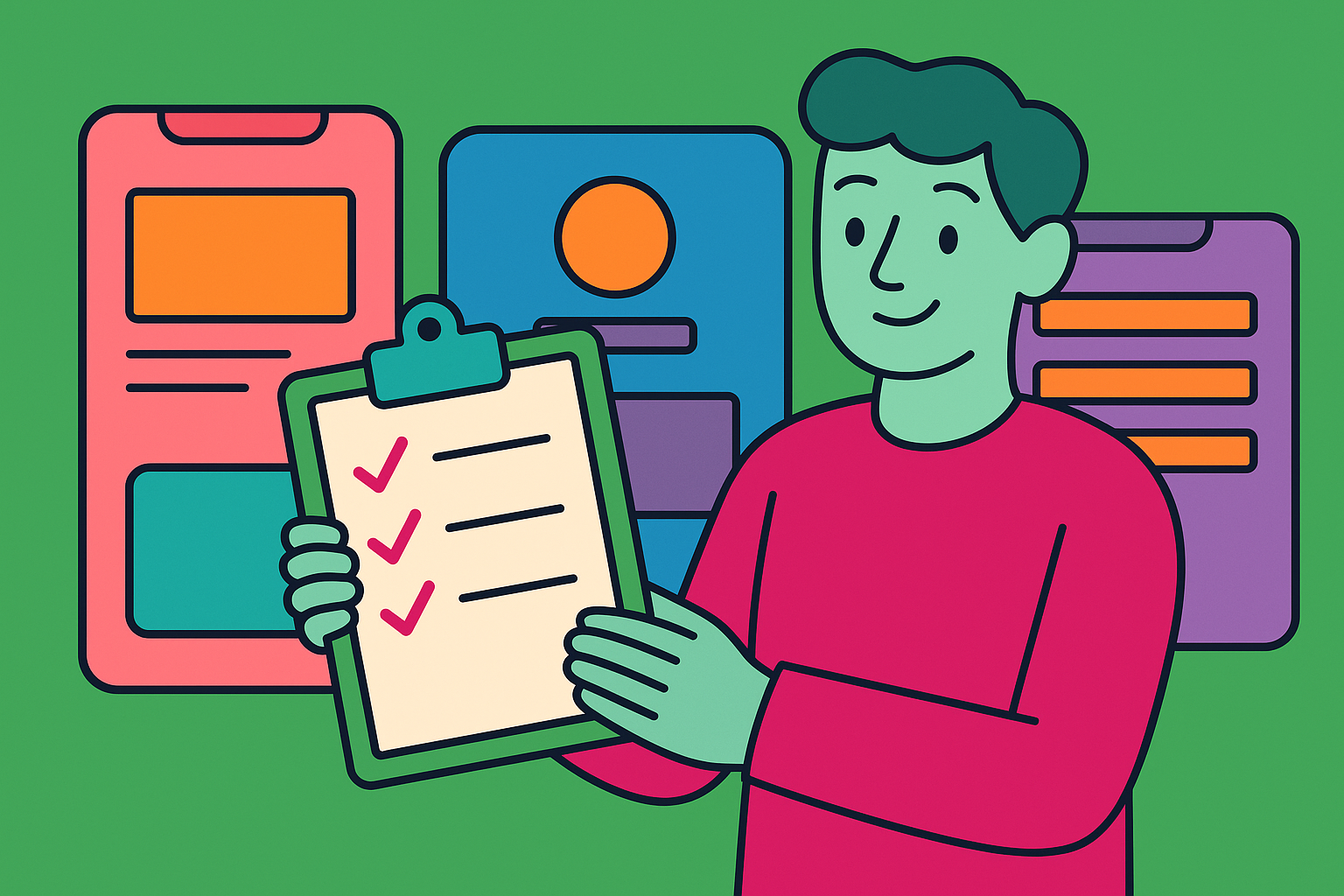Why Test Plans Are Your App's Best Friend (And Your Sanity Saver)
Test plans aren't just paperwork - they're your secret weapon for catching bugs and keeping launches smooth.

Test plans aren't just paperwork - they're your secret weapon for catching bugs and keeping launches smooth.

Picture this: Your app launches tomorrow. Your lead developer just quit. Your QA person is sick. And suddenly, nobody knows how to properly test your most important feature.
Sound like a nightmare? It doesn't have to be.
This is exactly why test plans matter so much (and why smart founders make them a priority from day one).
Think of a test plan like a pilot's pre-flight checklist. Just like pilots check every system before takeoff, a test plan tells your team exactly what to verify before your app "takes flight" with users.
It's a simple document that lists:
No tech degree required to understand it!
Here's something cool: when you write down exactly how to test something manually, you're basically creating a blueprint for robots to do it later.
Your test cases become the foundation for automated testing. This means your computer can eventually run these tests for you while you sleep. Pretty neat, right?
Without clear test plans, automation becomes nearly impossible. You'd be asking a robot to "just make sure it works good" - which is about as helpful as it sounds.
Remember that nightmare scenario we started with? Test plans are your insurance policy against losing critical knowledge.
When everything your team knows is written down clearly, new people can jump in and immediately understand:
Think of it as creating a safety net for your business. If someone leaves (and trust us, people always leave eventually), their knowledge doesn't walk out the door with them.
Your QA team shouldn't have to guess what to test before each release. They shouldn't have to remember "oh yeah, don't forget to check that weird thing that broke last time."
A solid test plan gives them a checklist that covers everything, every time. It's like having a co-pilot who never forgets to check the landing gear.
This consistency means:
Launch day doesn't have to feel like jumping out of a plane and hoping your parachute works.
When you have thorough test plans that cover both positive and negative scenarios, you can sleep peacefully knowing that someone has methodically checked every important part of your app - including what happens when users inevitably do unexpected things.
Your team can confidently say "we tested the happy path, the error cases, and everything in between according to our plan, and we're ready for anything."
We've seen too many startups learn this lesson the hard way. They skip test plans to "move faster," then spend months fixing problems that could have been caught early.
One client came to us after their app kept breaking in production. Users were frustrated. The team was stressed. Investors were asking tough questions.
The problem? They had talented developers but no systematic way to verify their work. Every release was a gamble.
After implementing proper test plans, their bug reports dropped by 80%. Their team went from firefighting to confidently building new features.
You don't need a 100-page document to start. Begin with your most important features and ask:
Write down the answers in plain English. Make sure you cover both positive scenarios (when everything goes right) and negative scenarios (when users make mistakes or things go wrong). Congratulations - you just created your first comprehensive test plan!
Test plans aren't bureaucratic paperwork that slows you down. They're the foundation that lets you move fast WITHOUT breaking things.
They protect your knowledge, enable automation, keep your QA team organized, and make launches actually enjoyable instead of terrifying.
Smart founders treat test plans like insurance - you hope you never desperately need them, but you're incredibly grateful when you do.
Ready to build test plans that actually protect your app and your sanity? Reach out to us for all your software development and quality assurance needs. We'll help you create testing processes that keep your users happy and your launches smooth.